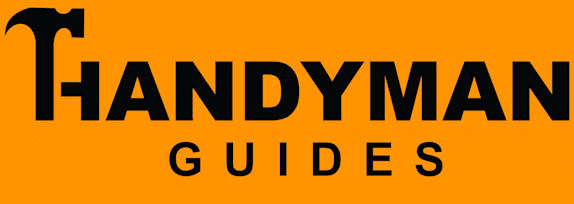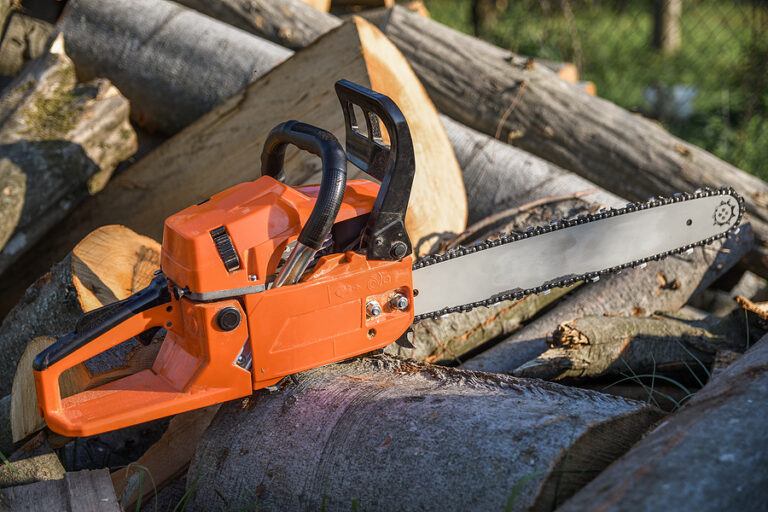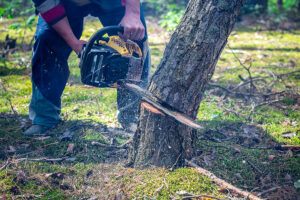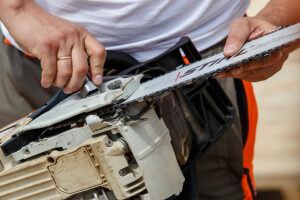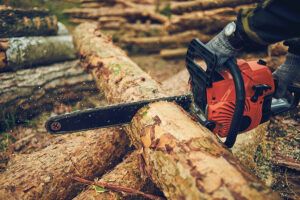Whether you’re pruning tree limbs, cutting firewood, or fighting off zombies, a chainsaw is an important tool to have. Before these incredible devices were around, a man was expected to do all of his pruning, log splitting, and zombie-fighting with a standard ax or saw. In fact, a simple task like felling a tree took several men to finish the job, while a standard chainsaw allows one man to get the job done quickly and effectively.
It’s no secret, though, that chainsaws can be pretty expensive. It’s also no secret that plenty of cheap chainsaws can end up costing a person more money than had they just bit the bullet and bought that more expensive model. Because of this, we’ve gone to the trouble of listing the top 6 best chainsaws under 300 dollars so you won’t get stuck with a cheap model that breaks after a couple of uses. Keep on reading to find the right choice for you and your project!








Table of Contents
Best Chainsaw under $300 Reviews
Here is our list of the best affordable chainsaw under 300 dollars that (hopefully) won’t crap out on you after one or two uses. Of course, anything can happen, so make sure you do your own research accordingly and ensure your pick is top-notch!
1. EGO Power+ – Best Overall Chainsaw under $300
The 14” version of this chainsaw is designed to give you high power at a moderate price. It offers a speed of up to 6800 rotations per minute, which can cut through just about anything, and also gets up to 130 cuts on a single charge. You’ll get a 2.5 amp battery and charger to go with it, so you’re always ready to cut into anything, and the 56-volt system means that it’s powerful enough to cut through even your toughest projects.
This chainsaw has a brushless motor, chain tension adjustment, chain kickback brake, and it’s water-resistant. All of this means that you’re going to have power and you’ll have something that’s easy to use. It can cut through trees and more up to 14” in diameter and has a 3/8” low profile pitch on the chain itself. All you need to do is charge it up and you’re ready to get cutting.
Pros
- Low kickback design
- Water-resistant
- Ability to adjust chain tension easily
Cons
- Not as powerful as expensive gas-powered saws
- Bad customer service
2. Greenworks Pro – The Runner Up
Coming in second place is the Greenworks Pro, which offers an 18” bar and chain. That means a little more size than our first place option and a little more voltage, at 80-volts. It’s also able to complete up to 150 cuts on a single charge. However, you’re going to need to purchase a battery and charger separately to get started, which means a little bit more upfront. This chainsaw uses a 2.0 amp battery and charger, which need to be purchased to get started.
The brushless motor is guaranteed to start every time without needing priming, pulling, choke, or anything else. Plus, it’s side-mounted to give you easier use and maintenance. The chain stays lubricated with an automatic oiler and there’s a chain brake built in that’s inertia-activated, so you can reduce the risk of injury. The saw itself is compact and lightweight, giving you some of the top options you otherwise get only with a gas-powered system.
Pros
- Inertia-activated chain brake
- Lightweight
- Up to 150 cuts for a single charge
Cons
- Bad customer service
- A little big for nonprofessionals
3. Oregon CS1500 – Best Budget Chainsaw
When it comes to saving a little money sometimes you need to make a tradeoff. So, how do you make sure that you’re getting something good? You can definitely go with the Oregon CS1500, which is an 18” chainsaw with plenty of bonus features. It’s an electric saw that works as long as you want it to because you keep it plugged in while you’re working. Plus, it offers automatic oiling so the chain doesn’t get overheated and you can keep working for even longer.
The instant start function is convenient and ensures you don’t spend far too much time trying to get your chainsaw up and running before you can even start using it for cutting. Plus, you can even sharpen the blades right on the saw. The whole process only takes a few seconds and you’ll be ready to get started. Silent when it’s not cutting, and quiet even when it is, you’ll definitely get some good benefits out of this chainsaw to go along with the low price. Not to mention it has a chain brake that keeps you even safer during use. Get started with this 15 amp system in no time and make sure that you’re getting through all of your cutting work.
Pros
- Automatic lubricating chain
- Comes with PowerSharp chain and stone
- Low noise
Cons
- Complaints of the chain coming off
- Cheap design
4. DEWALT Max XR – Best Lightweight Chainsaw
Getting the job done is great, but you don’t want to be holding or carrying around a large, heavy system while you’re doing it. That’s where the Dewalt Max XR is a great pick. It’s 12”, which is enough to get through just about anything you need. Plus you’ll get a total of 90 cuts for a single charge. Add in the lightweight aspect and you’re definitely on a good track. Plus it offers tool-free bar tightening and chain tensioning, which gives you enough power to get your jobs done.
You’ll bet a brushless mower and low kickback, which makes the entire system much safer for anyone using it. Plus, it all runs on Dewalt’s 20-volt MAX system. This gives you plenty of power and also makes for plenty of interchangeable tools to choose from. You will need to purchase a battery and charger separately as these are not included. At only 8.8 pounds, however, this is definitely one of the lightest chainsaws you’re going to find, but it doesn’t reduce the power in order to get that lower weight. You’ll still have everything you need.
Pros
- Lowest weight chainsaw we’ve seen
- Up to 90 cuts per charge
- High-efficiency brushless motor
Cons
- Complaints of cheap plastic design
- Best mainly for mid-tier jobs and not heavy-duty jobs
5. Makita XCU03Z
Finally, don’t miss out on this high-quality chainsaw that offers variable speed to give you the power you need, when you need it. It also has an auto-shutoff, which keeps you and everyone around you safer while you’re working. This also helps reduce the amount of battery power that you use without actually doing any work. The brushless motor gives you more efficiency and the whole thing works as well as a 32cc gas chainsaw without the need for the gas at all.
With this saw, you’ll need to purchase batteries and a charger separately, but the 18-volt LXT options that work with this saw will make it strong enough for most jobs. That means you can take care of construction and smaller projects around the house with no problem. It’s small, strong, easy to use, and features a comfortable design. Not to mention there’s a built-in lock-off that means the blade won’t engage when you don’t want it to. At just over 10 pounds, it’s also going to be a relatively light option that you can use for most applications.
Pros
- Variable speed trigger for ease-of-use
- Auto-power off when idle to save energy
- Ergonomic design
Cons
- Complaints of oil leaking
6. BLACK+DECKER 40V Max Cordless Chainsaw
If you’re looking for a solid option for an affordable chainsaw, then the Black+Decker 40V Max Cordless Chainsaw is the obvious choice. With no cords or gas required, this easy-to-use chainsaw is battery-operated and ready to get the job done. It comes with a lithium battery that holds up to 18 months of charge, a 12-inch bar and chain, and an automatic lubrication system that will passively oil up your chain for your convenience. The saw also has zero emissions if you’re environmentally conscience, or don’t like potentially breathing in fumes.
If all these things weren’t enough, this saw also has a low kickback bar allowing easy cuts for any mid-level project. Typically, gas-powered chainsaws are best for heavy-duty projects, but with this powerful saw, you should get an average of 60 4×4 pine cuts after a single charge. So, while we always recommend higher dollar gas-powered saws for tough projects, you can likely get a lot of use out of this saw even for tougher projects. If you’re needing a saw for typical maintenance work, however, then this is an obvious choice for one of the best chainsaws under $300.
Pros
- Low kickback bar for incredibly smooth and quick cuts
- Ability to easily adjust chain tension
- Has front handguard and other great safety features
Cons
- Some customers have complained about chain oil leaking
- Only works best for mid-tier jobs
Chainsaw Buying Guide
So, what exactly makes a chainsaw a great buy, anyway? Great question, and we definitely think it’s worth asking. Because of this, we’ve compiled another list of some of the key factors everyone should examine while researching to find the best affordable chainsaw. If you have any further suggestions on what you look for in a good chainsaw, we’d love to hear them!
Power Options
First and foremost, a person needs to know what type of chainsaw they are wanting to purchase. Typically, there are 3 different power options to choose from when it comes to chainsaws: gas-powered, electric, or battery-powered.
Gas-powered Chainsaws
Gas-powered, just as it sounds, is fueled by gasoline (and sometimes a blend of gasoline and 2-cycle oil, depending on what type of model it is and what is recommended by the manufacturer). It is typically the most powerful option and will give you a longer bar length, but it is also typically the heaviest option. It’s also very noisy, so you wouldn’t be able to sneak around with this bad boy! These models typically require more maintenance as well, so keep that in mind before buying one of these.
Electric Chainsaws
The next option is electric chainsaws, and just as the name suggests these babies require electric power! This means you’ll need to plug the saw into an outlet, and hopefully, you’ll have a long enough cord to get the job done. Their power level is akin to a mid-tier gas-powered saw, but the trade-off is you won’t need to worry about mixing the right amount of gasoline and 2-cycle oil! If you need to use an extension cord, try to find a good heavy-duty cord that can handle the amount of electricity your saw pulls in. Also, try not to trip over the cord or you might lose a limb (or worse!).
Battery-powered Chainsaws
The last of the most common options in the battery-powered chainsaw. As you might expect, this option is usually the weakest option, but it is also the most lightweight option and easiest to handle. So, we recommend only going with a battery-powered saw if the job you’re needing to do is small like trimming bushes or pruning small trees.
Type of Chain
Another important factor to keep in mind is the type of chain you’ll be needing to use for your job. Most of the time, the chain that comes with the saw is sufficient to get the job done, but if you think that you’ll be using your saw quite a bit for a variety of different tasks, you may want to get a better understanding of things like the teeth profile of the chain as well as different spacing options. Before purchasing your chainsaw, check to see if you’ll be able to switch out the chains easily just in case you find yourself in need of a new chain in the future.
Maintenance and Repair Needs
Lastly, it’s important to keep in mind the amount of maintenance and/or repairs that your new chainsaw will need over time. The most common maintenance needs pertain to the saw’s chain as well as the motor. Make sure you clean the chain after each use if you see a lot of debris, and ensure you’re efficiently lubricating the chain with oil. You should also keep your chain sharp, and it’s recommended you sharpen it after each gas refill, or after a full day’s use if you’re operating an electric saw.
Chainsaw FAQs
Here are some common questions we hear about chainsaws that warrant diving into:
What Was the Original Use of a Chainsaw?
This might come as a shock to you, and it definitely did to us, but chainsaws were actually originally used during childbirth. Yep, you heard that right. The original version of the chainsaw looked more like a kitchen knife, and it was used by doctors to remove part of a woman’s pelvic bone if the child got stuck. Yikes. It’s a good thing we have C-sections now because that sounds barbaric!
How Do You Properly Measure a Chainsaw Bar?
The simplest way to measure your chainsaw bar is to start at the tip of the bar and move toward the actual body of the saw. You’re measuring the part of the saw that you actually use while cutting. Next, round the measurement up to the nearest even number in inches. So, if your measurement is about 18 and a half inches, just round that up to 20 inches. Here’s a more in-depth article on the proper way to measure your chainsaw bar if you’re curious.
How Do You Sharpen a Chainsaw?
First, you’ll need to determine exactly how you wish to sharpen your chainsaw. Do you plan on sharpening it by hand with a file, or do you have a power sharpener you want to use? In our opinion, sharpening a chainsaw by hand with a file is the best and most tried and true method to sharpen your chain.
This will definitely require a more in-depth article, so stay tuned for that! For now, check out this great video that shows you step-by-step how to sharpen your chainsaw by hand with a file:
Find the Best Chainsaw under 300 Dollars That’s Right for You
Chainsaws are certainly one of the best power tools a modern man needs whether they plan on using it for outdoor maintenance, ice sculpting, or firewood splitting. While gas-powered chainsaws are easily the most powerful, with great power comes a great price tag, so you’ll notice that all of our picks for the best affordable saw are either electric or battery-powered. This doesn’t mean these saws don’t have power, as we’ve mentioned, they can definitely get any mid-tier level job done with ease. Hopefully, this article has cleared the air for you when it comes to making the right choice, and we would love to hear how our guide has helped you make the right decision!
Jake is a tool guy – think Tim Allen from Home Improvement but with a much drier sense of humor. He lives in the great state of Ohio and plays the guitar on his downtime. He also spends his time writing on all things tools and DIY-related as this is his passion.
